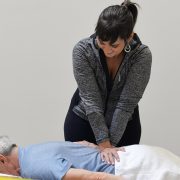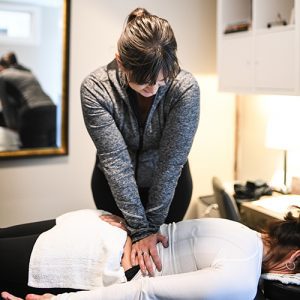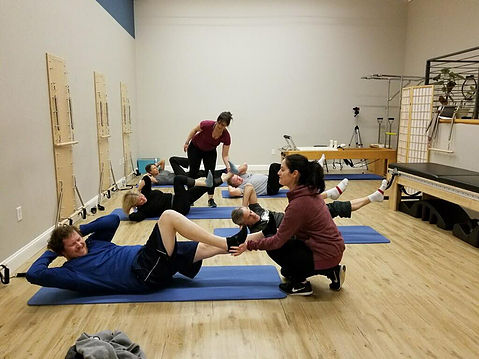Where is your pain REALLY coming from?
Don’t assume that where your pain is… is where the problem is!
This is a very common assumption and one that that we’ve been seeing a lot lately. If you watched our most recent Happy Hour on Facebook Live, then you know the story of the young guy who came to us looking for help with his heel pain. I checked out his heel, foot, and leg, but didn’t find any issues that would be causing the pain that he had been experiencing for four years.
I had planned on addressing the heel specifically before examining his back, but when he mentioned that he also felt a lot of tightness from his back into his leg, I decided to check it out. We did a test on his back and when he stood up, he immediately told me that his heel felt better! I was just as surprised as he was. He was able to walk with less pain and his movement felt better overall. But when he started stretching his calf to his heel again, the pain came right back.
All that stretching he’d been doing day after day – to the area that he thought was the problem – may have actually been doing him more harm than good!
Now, it’s pretty clear that this young client doesn’t have a foot problem – where is pain actually was. He has a back problem. And that’s something we can work through and fix! But if he never saw a specialist physical therapist like myself, he probably would’ve continued to believe that there was just something irreversibly wrong with his heel, and maybe even limited certain areas of his life, like football and sports, because of that.
Why should this matter to you?
You might not have heel pain or even noticeable back issues, but maybe you have pesky knee pain, a hip that hitches when you walk, or an achy ankle. Maybe you just feel muscle tension that never seems to go away, or weakness performing certain tasks. These could all be indicators of a problem in your back! Or somewhere else that just hasn’t been looked at yet, because it doesn’t match the main area of your pain.
If you’ve tried a lot of things and it’s not going away, it’s an indicator that your haven’t found the real source of your problem yet. Especially if you’ve gone to a doctor for pain in another part of your body and they’ve told you that there’s “nothing wrong.” Or maybe you’ve been stretching, massaging, and foam rolling religiously every day – only for it to keep coming back like a vicious cycle. You might think that by doing this, you’re helping your problem and keeping it from getting worse – and you might be – but you certainly aren’t doing anything to actually address the problem and you aren’t any closer to a real solution. That’s why physical therapists are so important to have as part of your healthcare team – we’re trained to examine and treat the whole person – not just the foot/knee/hip/heel.
Getting Help
We know not everyone is ready to commit to regular physical therapy appointments, and that’s why we offer free Discovery Sessions out of our practice in Portsmouth, NH! All you have to do is fill out this brief form here and we’ll contact you. Discovery Sessions are a great opportunity to talk with a specialist about creating the best plan to get you healthy and feeling your best – without any obligation or commitment.
Feel free to reach out anytime, and be sure to like our Facebook page to stay up to date on Friday Happy Hour videos in the weeks to come!







